Wheelchairs are more complex than just a comfy seat with wheels. Every model is designed with the user’s specific needs in mind, from the materials to the capabilities of the tires on various surfaces.
In this article, we explore the many types of wheelchair wheels for manual and power models to get an idea of the best setup for your lifestyle. Alright folks, let’s roll out!
Manual Wheelchair Wheel Setup
Before we delve into the realm of rubber, foam, spokes, and tread patterns, it’s essential to have an understanding of how the wheelbase is set up on a wheelchair.
We’ll start with the traditional manual chair, which features two sets of wheels:
- Two large back wheels are also called the “wheelchair rear wheels” or “drive wheels” since you use them to propel yourself.
- Two smaller wheelchair front wheels called “wheelchair caster wheels” swivel in all directions to enhance maneuverability.
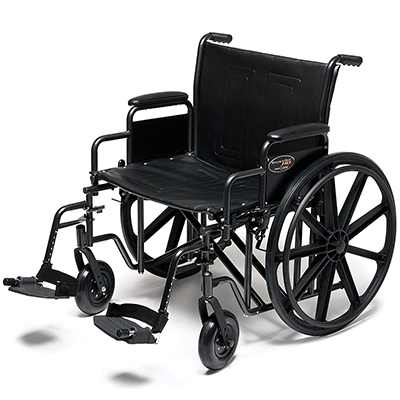
However, remember this is the standard. Specialized wheelchairs might offer a different configuration, such as one small wheel in the front for playing sports.
The main parts of a wheel consist of the tire, rim, pushrim, spokes, and hub.
Power Wheelchair Setup
The self-propelling motorized wheelchair has quite a different wheelbase from the manual, featuring a front-wheel drive, rear-wheel drive, and a mid-wheel.
- Front-wheel drive: This larger wheel facilitates maneuverability for indoor and outdoor use, making it easier to confront obstacles, unlike small casters.
- Rear-wheel drive: This type of setup stabilizes the wheelchair, enabling it to travel up or down steep terrain with ease. It does have the largest turning radius of the three setups, which might be difficult to fit through most doorways.
- Mid-wheel: This configuration is found on the majority of consumer chairs, featuring the tightest turn radius of the three. It’s intuitive, stable, and bears a smaller footprint. However, this isn’t the best for outdoor use.
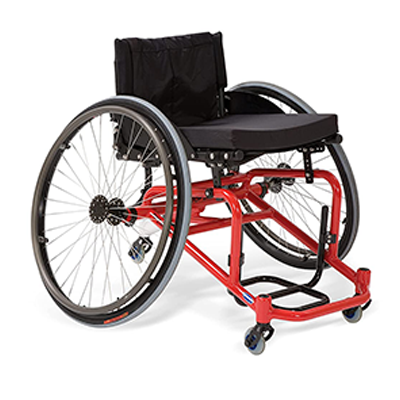
Electric wheelchair wheels tend to have thicker tires compared to manual models, which enhances safety and durability for moving over various surfaces while accommodating the weight of the chair and user.
Different Types of Wheelchair Wheels and Tyres
Now that you’ve got wheel configurations down, it’s time to dive into the nitty-gritty. Wheelchair tires come in all sorts of shapes and sizes, adapted to perform safely according to the user’s environment.
Some people may spend ample time outdoors running errands, working on a construction site, or playing sports.
Others might stay indoors for the majority of the day, moving over smooth surfaces and needing to maneuver around furniture and through doorways.
Regardless of the situation, there is a tire to make mobility a breeze. For example, the best wheelchair wheels for indoor use feature skinny tires with a light tread pattern that delivers a faster and smoother ride.
On the other hand, the best off-road wheelchair wheels, including wheelchair wheels for sand are wider, with a knobby tread that increases traction to prevent slipping and sliding.
There are also tire materials to consider, as this plays a vital role in the ride’s durability, cost, and smoothness.
Pneumatic Wheelchair Wheels
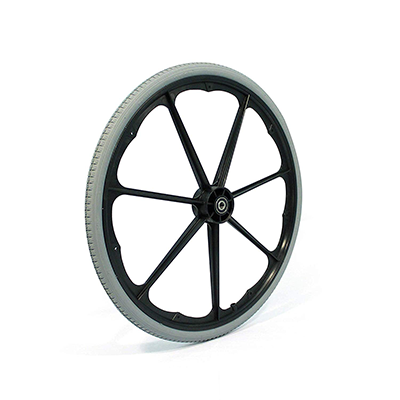
This is the most common type of rubber tire for manual and power wheelchairs, distinguished by an inner tube that is inflated with air.
They’re light and offer above-average traction indoors or outdoors, providing a smooth ride with shock-absorbing benefits.
But although popular, pneumatic tires do require a substantial amount of maintenance to keep the tire pressure where it needs to be since the air leaks over time.
Plus, there’s always the risk of a flat tire that could leave you stranded in the middle of nowhere.
Like a bicycle tire, you can fix-up minor punctures with a patch kit, but this won’t exempt you from having to replace the inner tube every couple of months due to wear and tear.
So, although you can enjoy outdoor activities with these tires (especially if you let the air out a bit to get a wider tire and full contact tread), always keep an eye out for sharp objects, such as nails and glass.
You might want to consider solid wheels if you’re outdoors quite often.
Anti-Puncture Tires
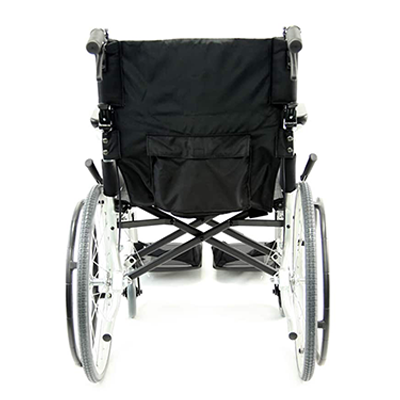
These tires are also made of rubber, except you don’t have to deal with air. The tire’s inner tube is filled with solid foam or plastic typically made from urethane or polyurethane.
What’s neat about these tires is that they are puncture-proof. It doesn’t matter if you run over a nail. They stay fully intact and ready for action.
That also means you don’t have to check the tire pressure constantly, cutting down on the maintenance.
But don’t get too excited- these tires have their drawbacks, too.
Flat-free tires are almost 2x heavier than pneumatic, which can be anywhere from two to four lbs of extra weight, depending on the material.
This is a big deal, as even a little extra weight can throw off a wheelchair’s functionality. It also makes it challenging to maneuver around tight spaces indoors.
They’re also stiffer, so don’t expect to glide smoothly over those surprise bumps. While flat-free tires are suitable for the outdoors, the shock absorption and traction are average compared to pneumatic.
You do get to enjoy a longer life with these, but you’re better off going to the provider for help when it does come time to replace them. Flat-free tires are complicated to change and tend to be expensive.
Honestly, foam-filled tires are ideal if you work outdoors in construction, factory, or agriculture. You won’t have to worry about sharp equipment taking out your trusty wheeled steed.
Spoked and High-Performance Wheels
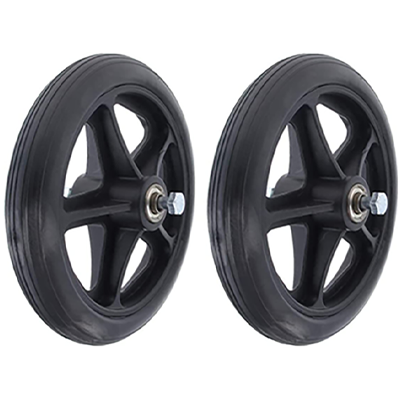
For the active individual, spoked wheels give you bicycle feels to improve sports performance through speed and maneuvering.
The reason for this is that the spoked wheels flex when propelled, producing a burst of energy that shoots the chair forward with increased velocity and less effort.
High-performance wheels, on the other hand, are the tire elite. This type of wheel is specially designed using lightweight materials for serious athletes or highly active individuals who constantly push the boundaries of their equipment for power and speed.
Wheelchair Wheels and Tires Cost Comparison
Cost is going to be a deciding factor in choosing your wheels, with size and materials playing a pivotal role.
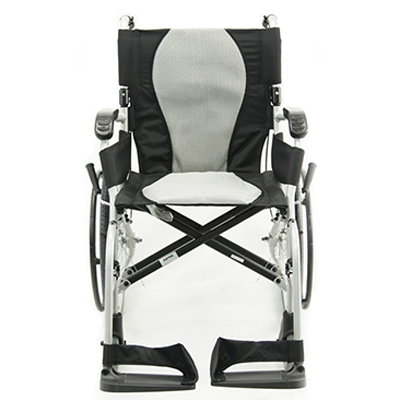
Pneumatic tires are the least expensive, which also accounts for their popularity. The standard rear-wheel size 24″ x 1 3/8″ or 1 1/4″ tire is typically priced between $10 to $45 per wheel.
The cheaper tires are made of low-grade rubber, while expensive models are made out of thicker, high-quality rubber that is reinforced on the sidewalls or has a high tire pressure.
Meanwhile, solid puncture-proof tires are known to be pricier, ranging between $10 and $50 per tire. Once again, the materials make the biggest difference, with foam-filled tires costing less than plastic.
How to Determine Wheelchair Tire Sizes
Choosing the accurate wheel size and fit is what ties it all together, especially since most frames can’t be adjusted to accept just any size.
Before replacing your tires, it’s important to consult with your provider to determine your wheelbase’s exact measurements and configuration.
You can also use your wheelchair’s serial number to check the original wheel sizing from the manufacturer.
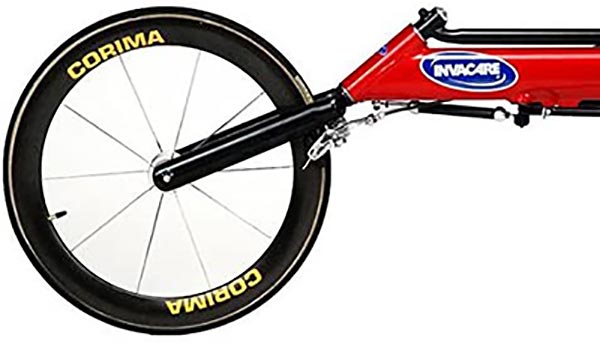
For wheelchair tires, you’ll see a double-digit number and a triple-digit number. The double-digit represents the tire width, while the triple-digit represents the wheel diameter.
Final Thoughts: Types of Wheelchair Wheels and Tires
From wheelchair small wheels to high-performance tires that give the user more power and speed, there is a vast assortment of different types of wheelchair wheels designed to accommodate any lifestyle.
The main factors determining the cost and uses are the materials, size, and configuration. The best way to make sure you get it right is to discuss your interests with the supplier, as they can provide knowledgeable advice that saves time and money.
Resources & References:
- Influence of Varying Level Terrain on Wheelchair Propulsion Biomechanics, ncbi.nlm.nih.gov.
- Tests of Two New Polyurethane Foam Wheelchair Tires, rehab.research.va.gov.
- Wheelchair Technology in the Paralympics, theconversation.com.
- Tire Selection: Balancing Performance and Maintenance, Motion Composites.
- Effects of Wheel and Hand-Rim Size on Submaximal Propulsion in Wheelchair Athletes, PubMed.gov